As you step outside on a crisp spring evening, you can’t help but notice the delicate balance between the promise of new garden growth and the lingering chill in the air.
It’s a crucial time for your spring crops, and finding smart ways to protect them from chilly nights is essential. But fear not, because in this discussion, we will explore practical techniques that can shield your plants from the cold and ensure their survival.
From frost-tolerant crops to utilizing row covers and cold frames, we will delve into a range of strategies that will leave you equipped to face those chilly nights with confidence. So, let’s uncover these smart ways together and safeguard the future of your spring crops.
Frost Protection…
- Select frost-tolerant crops and research suitable varieties for your climate.
- Use protective covers like row covers to provide insulation and protect plants from pests.
- Extend the growing season with cold frames and hoop houses to shield crops from cold temperatures, wind, and frost.
- Use mulching to maintain a consistent temperature, conserve moisture, suppress weeds, and improve soil health.
Choose Frost-Tolerant Crops
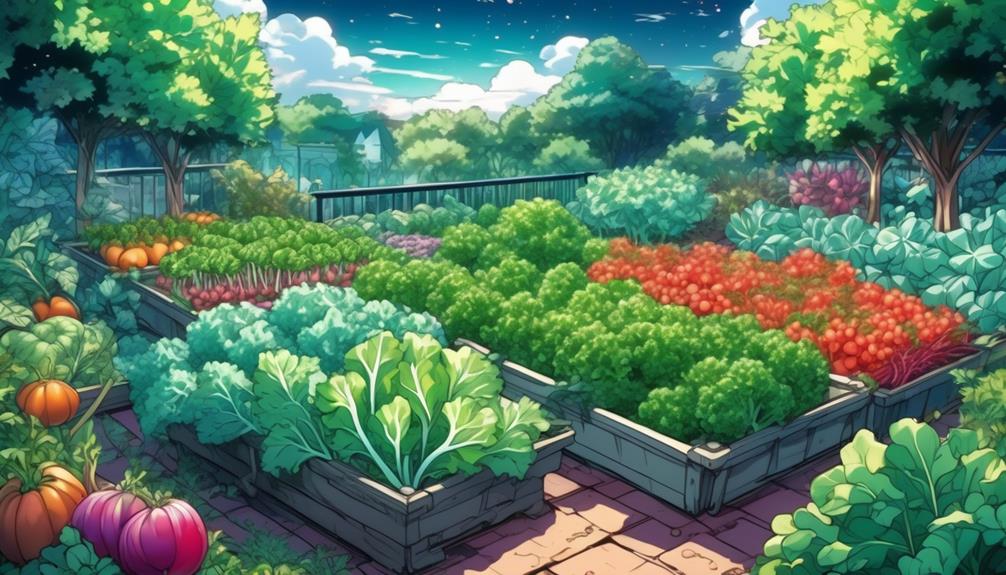
When selecting crops to protect your spring garden from chilly nights, it’s crucial to choose frost-tolerant varieties that can withstand cold temperatures.
Frost-tolerant crops, such as kale, spinach, and lettuce, are excellent choices for your garden. These crops have a natural resistance to cold temperatures, reducing the need for additional protection. Research different varieties of frost-tolerant crops that are suitable for your specific climate and growing conditions.
Look for crops with a shorter growing season to avoid prolonged exposure to frost.
Proper soil preparation is essential for the success of your frost-tolerant crops.
Start by clearing the garden area of any debris and weeds. Then, loosen the soil using a garden fork or tiller to improve drainage and aeration.
Incorporate organic matter, such as compost or well-rotted manure, into the soil to improve its structure and fertility.
Finally, level the soil surface and remove any large clumps or rocks.
Cover Plants With Row Covers

To protect your frost-tolerant crops from chilly nights, the next step is to cover them with row covers for added insulation and protection.
Row covers are lightweight fabrics that can be easily draped over your plants, providing a barrier against frost and cold temperatures. Here are the benefits of using row covers:
- Increased insulation: Row covers create a microclimate around your plants, trapping heat and providing an extra layer of insulation. This helps to prevent frost damage and keeps your crops warm during the night.
- Protection from pests: Row covers not only shield your plants from the cold, but they also act as a physical barrier against pests such as insects and birds. This reduces the risk of damage and allows your crops to grow undisturbed.
- Allows for sunlight, air, and water: Row covers are designed to allow sunlight, air, and water to penetrate through the fabric. This ensures that your plants continue to receive the necessary nutrients and conditions for growth, while still being protected from the cold.
There are different types of row covers available, including lightweight floating row covers, medium-weight row covers, and heavyweight row covers.
The type you choose will depend on the severity of the cold and the level of insulation required for your crops. Remember to remove the row covers during the day to prevent overheating and to allow bees and other beneficial insects to access your plants for pollination.
Utilize Cold Frames or Hoop Houses
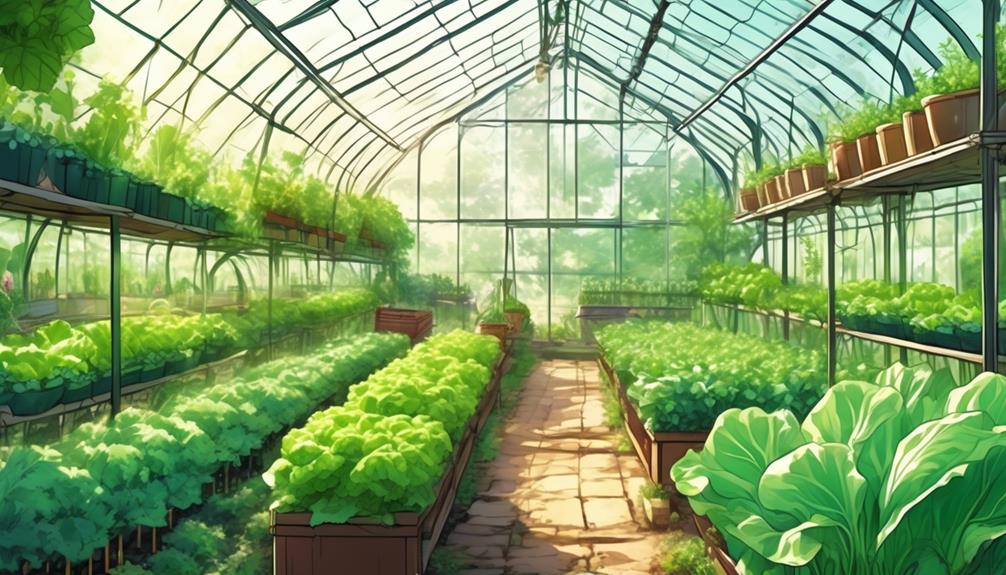
Cold frames and hoop houses are versatile structures that provide a controlled environment for spring crops during chilly nights.
These structures offer a range of benefits for year-round gardening. One major advantage is that cold frames can create a microclimate that protects crops from cold temperatures, wind, and frost. This allows you to extend your growing season and start planting earlier in the spring.
Additionally, cold frames and hoop houses are cost-effective options for protecting your crops, as they can be easily constructed using materials such as PVC pipes and plastic sheeting.
When it comes to DIY hoop houses, there are numerous creative designs that you can try.
One popular design involves using PVC pipes bent into hoops and covered with plastic sheeting. This design isn’t only affordable, but it also provides a sturdy structure that can withstand harsh weather conditions.
Another option is using old windows or glass panels to create a more aesthetically pleasing cold frame. These designs not only offer protection for your plants but also add a touch of uniqueness to your garden.
To maximize the benefits of cold frames and hoop houses, proper ventilation and temperature management are crucial. You can achieve this by incorporating vents or windows into your structures, allowing for air circulation and temperature control.
By utilizing cold frames or hoop houses, you can ensure that your spring crops thrive even during chilly nights, providing you with a bountiful harvest and a sense of satisfaction in your gardening endeavors.
Mulch Your Garden Beds
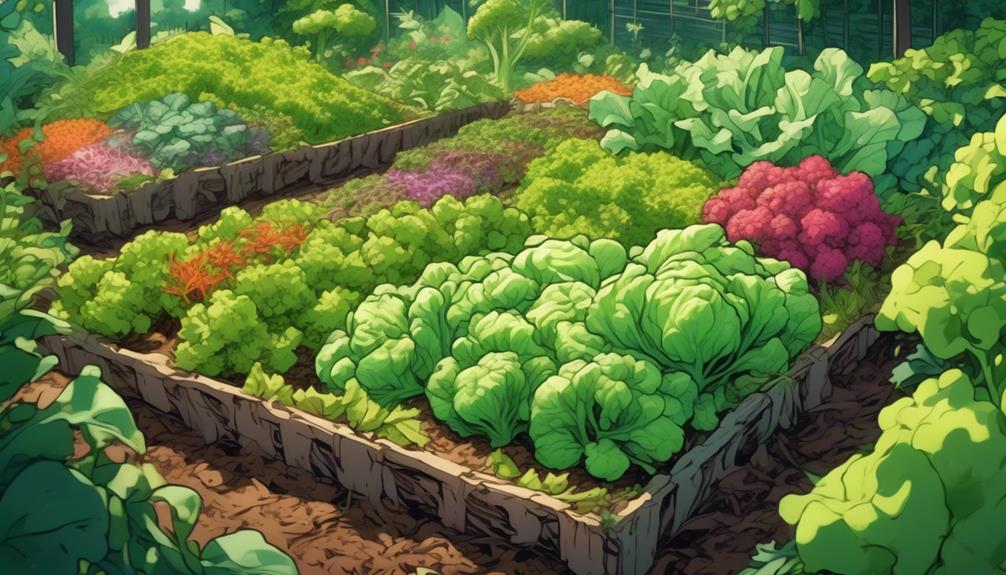
Mulching your garden beds is an effective method to protect delicate plants from the chilling temperatures of the night.
Here are some tips on how to select the right mulch for your garden beds and apply it effectively:
- Choose the right type of mulch: Organic mulches like straw, leaves, or bark are excellent choices for insulating your garden beds. They provide a protective layer that shields the soil and plant roots from extreme temperature changes.
- Apply mulch evenly: Spread a layer of mulch around your plants, ensuring that the entire bed is covered. This helps to maintain a consistent temperature and prevent cold air from penetrating the soil.
- Avoid piling mulch against plant stems: Make sure to leave a gap between the mulch and the stems of your plants. Piling mulch against the stems can trap excess moisture, leading to rot and disease.
‘Did you know? Mulching not only helps to protect plants from cold temperatures, but it also helps to conserve moisture, suppress weeds, and improve soil health. It’s a multitasking technique that benefits your garden in more ways than one!’
Use Water as a Protective Barrier
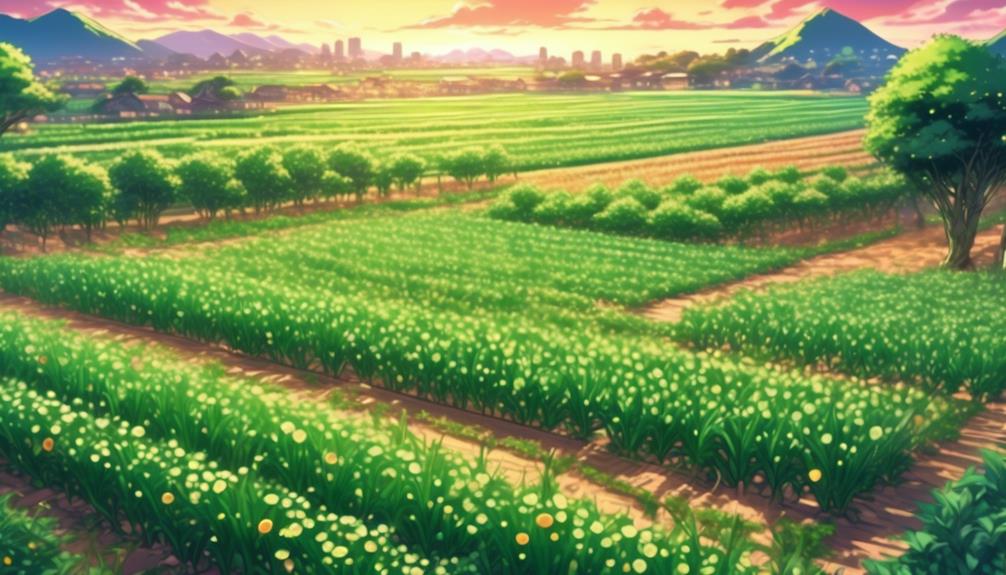
Using water as a protective barrier is a practical and effective method to shield delicate plants from the freezing temperatures of the night.
By spraying your plants before the temperature drops, you can create a thin layer of ice that acts as insulation. This ice layer helps to protect the plants from frost damage by releasing a small amount of heat during the freezing process.
To ensure success, it’s important to time the application of water carefully, ideally a few hours before the temperature is expected to drop. This allows enough time for the ice layer to form and provide adequate protection.
However, it’s crucial to be cautious not to overwater your plants before a cold night.
Excessive moisture can lead to other issues such as root rot, which can be detrimental to the health of your plants. Therefore, it’s essential to strike a balance and only apply enough water to create the protective ice layer without saturating the soil.
This method is particularly effective for plants that are sensitive to frost, such as citrus trees, tender herbs, and young seedlings. By taking the necessary steps to prepare your plants for cold nights, you can ensure their survival and promote healthy growth.
Implement Proper Spacing and Pruning Techniques
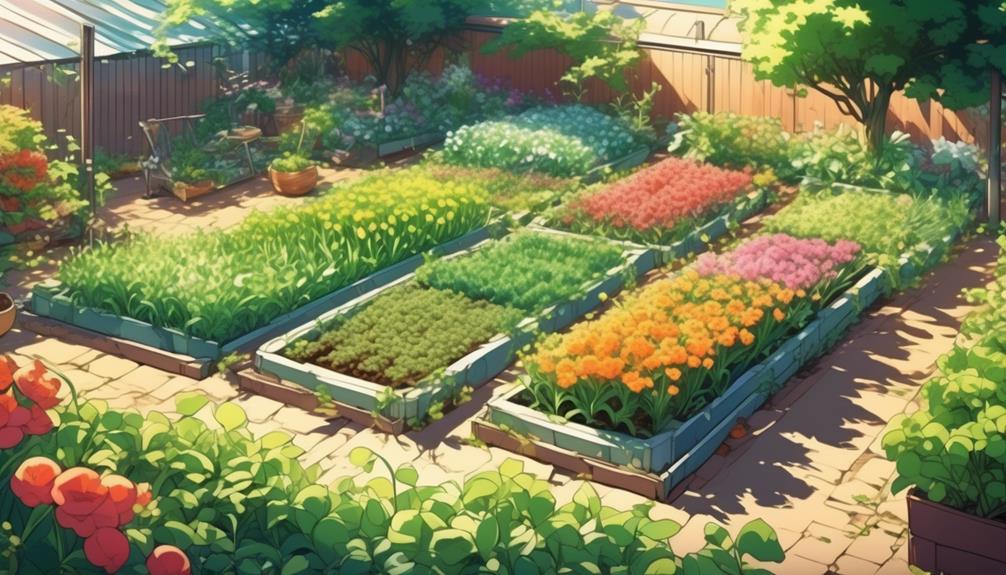
To protect your spring crops from frost damage, it’s essential to implement proper spacing and pruning techniques. Here are three reasons why these practices are beneficial:
- Improved air circulation: Proper spacing and pruning help improve air circulation around your plants. This is important because stagnant air can increase the risk of frost damage. When air circulates freely, it prevents cold pockets from forming, reducing the likelihood of frost settling on your crops.
- Plant size management: Pruning techniques, such as removing excessive branches or thinning out overcrowded areas, help manage the size of your plants. By doing so, you prevent overcrowding, which can lead to poor air circulation and higher vulnerability to frost damage.
- Overall plant health and resilience: Regular pruning allows you to remove damaged or weak growth, promoting the overall health and resilience of your plants. This helps them withstand the stress of chilly nights and bounce back stronger. Additionally, well-spaced plants are less likely to suffer from frost damage due to better air circulation and overall healthier growth.
In addition to spacing and pruning, consider the benefits of companion planting and the importance of regular plant inspections. These practices can further enhance the protection of your spring crops, ensuring their successful growth and harvest.
‘Did You Know? Frost damage can occur even at temperatures above freezing point. This is because the freezing point of plant tissues is lower than that of pure water, making plants more susceptible to frost damage.’
Consider Using Heat Sources for Extreme Cold Nights
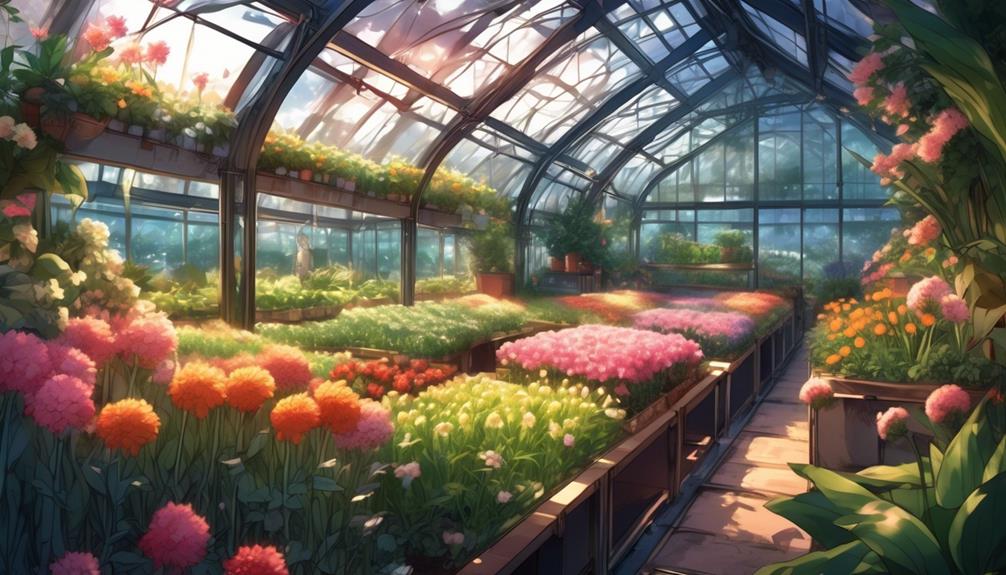
Improve the protection of your spring crops from frost damage by considering the use of heat sources for extreme cold nights. When faced with freezing temperatures, using insulation materials and alternative heat sources can help maintain a favorable growing environment for your plants.
One effective method is to utilize electric heating cables or mats placed under plant beds. These heating elements maintain the soil temperature, preventing roots from freezing and ensuring the overall health of the plants.
Additionally, row covers or cloches can be employed to create a warmer microclimate around plants. By incorporating small heat sources like incandescent bulbs within these protective covers, you can further shield your crops from chilly nights.
For larger areas, propane or kerosene heaters can be utilized. However, caution must be exercised to prevent fire hazards and ensure proper ventilation. Always monitor the temperature carefully and adjust the heat source as needed to prevent damage to your plants.
Remember to choose the appropriate heat source for your specific crop and growing conditions. Some plants may require more heat than others, so it’s important to research and understand the needs of your crops.
‘Did You Know? In the 17th century, European gardeners used large bonfires to protect their crops from frost during cold nights.’
In Summary…
To recap everything that’s been discussed, here are some smart techniques you can utilize to protect your spring crops from chilly nights:
- Cover plants with frost protection blankets.
- Time the covering in the late afternoon.
- Use a variety of materials for added insulation.
Remember to also take these steps:
- Choose frost-tolerant crops.
- Utilize row covers, cold frames, and hoop houses.
- Mulch your garden beds.
- Consider using water as a protective barrier.
In addition, implementing these practices is important:
- Proper spacing and pruning techniques.
- Use heat sources for extreme cold nights.
By following these guidelines, you can ensure the success of your crops. Stay informed, be practical, and enjoy a thriving spring garden.

